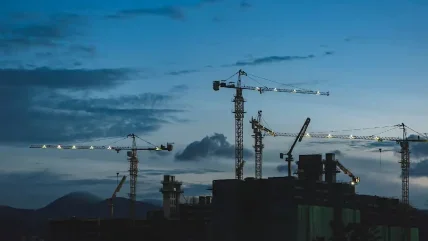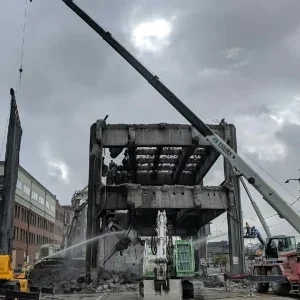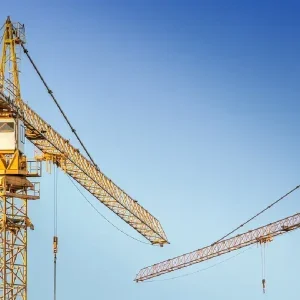
Introduction
In an era where information flows swiftly and pervasively, the cranes industry, like many others, faces the significant challenge of combating misinformation and disinformation. These phenomena can undermine industry’s reputation, disrupt operations, and mislead stakeholders. This article explores the nature of misinformation and disinformation, their impact on the cranes industry, and strategies to mitigate these risks. By understanding these issues and implementing effective measures, industry players can safeguard their operations and maintain trust.
Understanding misinformation and disinformation
Definitions and distinctions
- Misinformation: False or inaccurate information spread without malicious intent. Often, this involves sharing incorrect details unknowingly.
- Disinformation: Deliberately false or misleading information spread with the intent to deceive or mislead.
Both types of information can have profound effects, but disinformation is particularly insidious due to its intentional nature.
Common causes
- Human Error: Mistakes in reporting or communication can lead to misinformation.
- Bias and Assumptions: Preconceived notions and biases can distort information.
- Technological Amplification: Social media and digital platforms can rapidly amplify false information.
- Malicious Actors: Competitors, disgruntled employees, or other malicious entities may spread disinformation deliberately.
Historical context
Misinformation and disinformation have long been tools of influence and manipulation, but their impact has been magnified in the digital age. Notable instances include:
- Propaganda: Historical use of propaganda in wars to influence public perception and morale.
- Social Media Influence: Recent elections and public health crises have shown how social media can be used to spread false information widely.
Impacts on the cranes industry
Reputation damage
The cranes industry relies heavily on its reputation for safety, reliability, and expertise. Misinformation or disinformation can severely damage this reputation:
- Safety Concerns: False reports about accidents or safety violations can erode trust among clients and regulators.
- Product Quality: Disinformation about the quality or performance of cranes can lead to loss of business and market share.
- Corporate Integrity: Allegations of unethical practices, even if unfounded, can harm the industry’s image.
Operational disruptions
False information can disrupt operations in several ways:
- Supply Chain Issues: Incorrect information about suppliers or materials can cause delays and cost overruns.
- Regulatory Compliance: Misleading information about regulatory requirements can lead to non-compliance and legal issues.
- Project Management: Disinformation can mislead project stakeholders, causing misalignment and inefficiencies.
Financial implications
The financial impacts of misinformation and disinformation include:
- Market Volatility: False rumours can lead to stock price fluctuations and investor uncertainty.
- Increased Costs: Addressing misinformation requires resources, including crisis management and public relations efforts.
- Legal Costs: Potential legal actions resulting from misinformation or disinformation can lead to significant expenses.
Stakeholder relationships
Maintaining strong relationships with stakeholders is crucial for the cranes industry. Misinformation can strain these relationships:
- Client Trust: Clients may lose trust in companies perceived to be involved in scandals or poor practices.
- Employee Morale: False information about company health or employment conditions can affect employee morale and retention.
- Regulatory Relations: Regulators may increase scrutiny based on misinformation, leading to more frequent inspections and audits.
Strategies for mitigating the impact of misinformation and disinformation
Proactive communication
Proactive and transparent communication is essential:
- Regular Updates: Providing regular updates to stakeholders helps ensure they receive accurate information directly from the source.
- Media Engagement: Engaging with media proactively to share positive news and correct false reports.
- Digital Presence: Maintaining an active digital presence to control the narrative and respond quickly to misinformation.
Monitoring and response
Effective monitoring and response strategies are crucial:
- Social Media Monitoring: Using tools to monitor social media and online platforms for false information.
- Rapid Response Teams: Establishing teams to quickly address and correct misinformation.
- Fact-checking initiatives: Partnering with fact-checking organisations to verify information and counter false claims.
Education and training
Educating stakeholders about misinformation and disinformation can build resilience:
- Employee Training: Training employees to recognise and report false information.
- Client Education: Educating clients on how to identify and avoid misinformation.
- Industry Collaboration: Collaborating with industry associations to share best practices and resources.
Technological solutions
Leveraging technology can help combat misinformation:
- Artificial Intelligence: Using AI to detect and flag false information online.
- Blockchain: Implementing blockchain for secure, transparent, and verifiable information sharing.
- Data Analytics: Using data analytics to understand the spread of misinformation and develop targeted responses.
Legal and ethical standards
Adhering to high legal and ethical standards can enhance credibility:
- Compliance Programs: Implementing robust compliance programmes to ensure adherence to legal standards.
- Ethical Guidelines: Developing and promoting ethical guidelines for information sharing.
- Transparency Initiatives: Committing to transparency in operations and communications to build trust.
Case studies and industry best practices
Case study: overcoming a misinformation crisis
A leading crane manufacturer faced a misinformation crisis when false reports about a major safety incident spread online. The company’s response included:
- Immediate Statement: Issuing an immediate public statement to clarify the facts.
- Engaging Media: Engaging with media outlets to provide accurate information and counter the false reports.
- Client Outreach: Reaching out to clients directly to reassure them and provide factual updates.
- Social Media Campaign: Launching a social media campaign to correct misinformation and share positive news.
Best practice: industry collaboration
Industry collaboration can be effective in combating misinformation:
- Joint Initiatives: Forming joint initiatives with other companies and industry associations to address common misinformation challenges.
- Shared Resources: Developing shared resources and guidelines for handling misinformation.
- Collective Advocacy: Engaging in collective advocacy to promote industry standards and counter false information.
Future outlook and industry adaptation
Embracing digital transformation
Digital transformation can enhance resilience against misinformation:
- Enhanced Cybersecurity: Strengthening cybersecurity measures to protect against information tampering and hacking.
- Digital Literacy: Promoting digital literacy among employees and stakeholders to recognise and counter false information.
- Innovative Technologies: Adopting innovative technologies to improve information accuracy and transparency.
Building trust and credibility
Building trust and credibility is essential for long-term resilience:
- Authenticity: Maintaining authenticity in all communications and interactions.
- Consistency: Ensuring consistent messaging across all channels to avoid confusion.
- Stakeholder Engagement: Actively engaging with stakeholders to build strong, trust-based relationships.
Preparing for future challenges
Preparing for future challenges involves:
- Scenario Planning: Conducting scenario planning to anticipate and prepare for potential misinformation crises.
- Continuous Improvement: Continuously improving strategies and processes based on lessons learned from past experiences.
- Global Perspective: Adopting a global perspective to understand and address the impact of misinformation on a global scale.
Conclusion
Misinformation and disinformation pose significant challenges for the cranes industry, impacting reputation, operations, finances, and stakeholder relationships. However, by implementing proactive communication, effective monitoring and response strategies, education and training, technological solutions, and adhering to high legal and ethical standards, companies can mitigate these impacts and maintain trust. The future of the cranes industry lies in embracing digital transformation, building trust and credibility, and preparing for future challenges. By adopting these approaches, the industry can not only navigate the complexities of misinformation and disinformation but also thrive in an increasingly connected and information-driven world. Through a combination of strategic foresight, collaboration, and adaptive management, the cranes industry can continue to play a vital role in global construction and infrastructure development, even in the face of misinformation and disinformation challenges.






